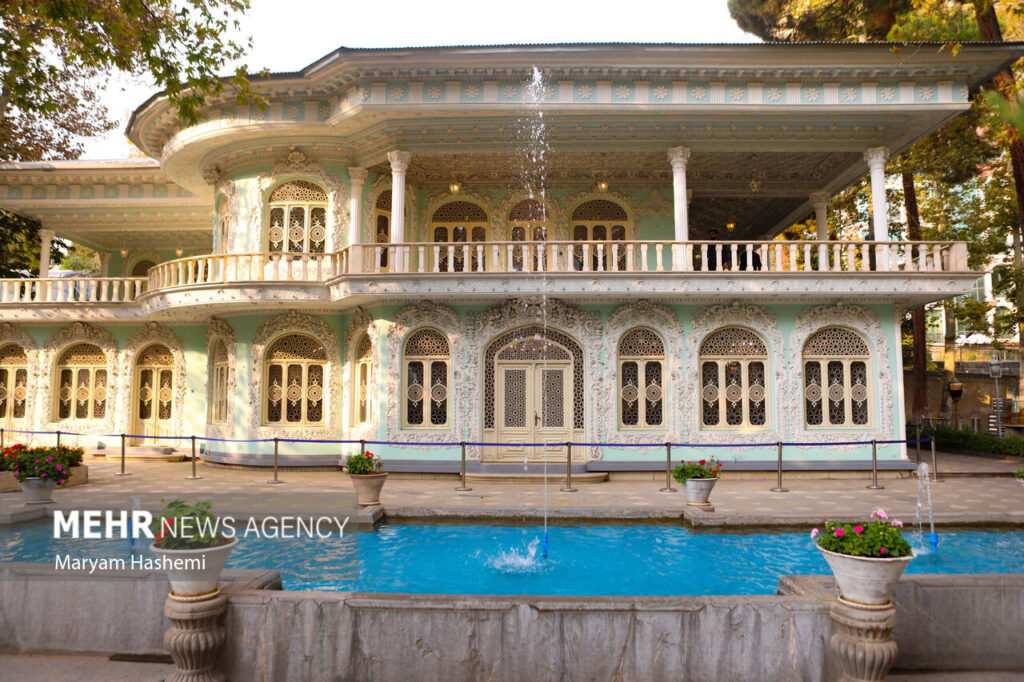Surrounded by the calm Zafaranier district of northern Tehran, the Time Museum (تماشاگ) offers a fascinating exploration of the history of clocks. Located in the historic Hossain Hodadad home, the museum presents an incredible collection of instruments measuring time, from ancient sundials to intricate mechanical clocks.
Tehran’s Time Museum is a magnificent mansion north of Iran’s capital on Zafaranier Street.
The construction of this mansion has returned to the days of Mohammad Shah and Nasr al-Din Shah Qajar. The mansion is actually a historic home also known as the Hossein Kodadad House, the Clock Museum and the Time Museum.
The Time Museum building is built in a 5 hectares area, with the building construction area of 700 square meters. Currently, it contains two stories, but at the time of construction it was a one-storey building. The building was purchased in 1963 by a person named Hossein Kodadad, a craftsman and entrepreneur.
Museum timing tools are displayed in many sections, including clocks, mechanical watch pocket watches (pockets and wrists), and time measurement tools.
The museum offers a different journey through history. This different journey begins exactly as you step into the Time Museum Garden.
The museum is located in the garden that gives you an interesting space. Before entering the museum building, you can see the sundials, oil clocks, rope clocks, dragon boats and water clocks of the following objects.

Time Museum Indoor Attractions
Step into the large first floor lounge and take a look at watches made in the 17th and 20th centuries. Here we have a mechanical heavy clock, examples of pendulums, desktops, walls, standing clocks, and more.
What is worth mentioning is that the building is registered as one of the great national masterpieces of Iranian architecture. The facades and plasterwork of the building are a mixture of Iranian and European styles.

The clocks are skillfully decorated, indicating the importance of past clock decorations.
Some of these watches were gifts received by politicians on trips to other countries, others were personal items.
Additionally, the museum has many clocks and clocks collected from the 17th to 20th centuries. In addition to Iran, some of these watches were also collected from countries such as England, France, Switzerland and Germany.

Another interesting thing about this part is that a bronze watch made in France has a gold cover. This watch is a type of shelf or desktop watch and belongs to the 5th century.

The figure of Homer, a magnificent Greek poet, is on this watch, decorated in the style of Louis XVI.

Of course, it’s not all about the clock. When I lift my head a little and look at the ceiling, I get hooked on the design and forget about time.

Esfahani Room
Hossein Kodadad’s love for Iranian art didn’t end with an artistic plaster. He chose a special room for the building and asked the master to design it in a different way than the rest of the building.

This room has a type of plaster that creates a deep shape in the form of a plaster container. It is inspired by the music room at Ali Kapu Palace in Isfahan and other Safavid monuments.

The ceiling of this room is decorated with Isfahan carpet designs, and the master uses a brick design to create the roof.

Celebrity watch
One of the fascinating parts of the museum is the collection of celebrity watches that have been donated to the museum themselves.

In this section, we will be introducing Jamshid Mashayekhi, Mohammad Ali Keshavarz, Ehteram Boroumand, Davood Rashidi, Aminollah Rashidi, Mostafa Rahmandout, Dr. Hassabi, Dr. Parviz Kordvani, Shahid Avini, Shahid Mehdi Bakeri, and…

Address: Parzin Baghdadi Crossroads, Shahid Fallahi (Zaferaniyeh) Street, Valiasr Avenue, Tehran, Iran
Edited by Marzieh Rahmani

